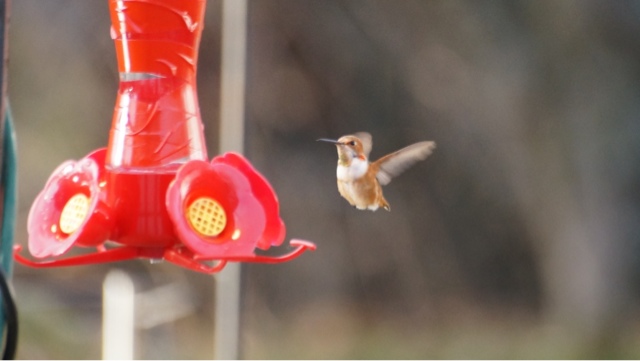"I have always depended on the kindness of strangers."
Blanche DuBois, A Street Car Named Desire
And it was no truer than today, as Beverley, the wife of John who is about to win the 2012 Big Year, helped me find accommodations in a camp ground last night so I didn't have to sleep in my car on the side of the road and end up in jail. Instead, I slept in my car in a secure and protected campsite right next to the washroom and shower facilities. Beverly also advised me as to where she saw the Western Spindalis in Key West Botanical Gardens, so I didn't have to end up spinning my wheels, so to speak, this morning.
So, a lucky break last night and another lucky break this morning in the botanical gardens, as I met Carl Goodrich, one of the birders who discovered the Spindalis. Nothing new to him, he's seen them many times before in the Bahamas and Cuba as well as here in Florida. He showed me all of the trees the bird has been seen in and we searched together for an hour without finding anything. So we split up. He took the inner depths of the park and I went back to where he had seen it yesterday, along the boardwalk. And as I walked along the boardwalk, looking into the big Fig tree, an olive-drab bird alighted on a branch in the next tree, not 10 feet from my face.
I didn't even need binoculars to identify what might have passed for an odd, boring little bird, had I not been specifically looking for a female Western Spindalis. As I brought my camera up for what would have been an amazing photo, it flew across the boardwalk and disappeared into another tree. It called a couple of times and that was also a means of confirmation. There was another birder present, Bo Howes, who checked his field guide as I checked my eBird App to doubly confirm it.
I went and found Carl and together we chased it from tree to tree trying to get photographs. This was the third day Carl has come to photograph the bird without success, so I don't feel too bad about missing the photo myself. I was just thrilled to have found it on my own. At the start of the year, after having seen the movie that got all this going, there were three birds I wanted to see this year: Nutting's Flycatcher, Pink-footed Goose and Western Spindalis. Well, four if you include the Xantus's Hummingbird, but my trip for the Allen's kind of emulated that movie experience. So in a manner of speaking, I got them all.
Before we parted company, Carl gave me a tip on where to see a White-crowned Pigeon. I've heard that before but over a morning of birding, I came to trust him. He sent me up to Key Largo and told me I'd likely see one flying over. He was right on. I saw my first White-crowned Pigeon almost exactly where he said I would. A good morning of birding resulted in birds number 594 and 595. I spent the rest of the day looking for and not finding White-winged Parakeets and Red-whiskered Bulbuls.
No worries. I will end the year with no fewer than 596 birds for the ABA area, plus 5 non ABA birds, giving me 601 in total. I will also leave Florida, having seen 189 species of bird here, this year.
Is there an award for Rookie of the Year in birding?
Tomorrow is a bonus day. Because of leap year, December 31 is day 366 of 2012. So I might as well keep going until tomorrow evening, when the sun will set on my first Big Year.
Good night, from Miami, and thanks to everyone who has helped and put up with this crazy adventure.




















































